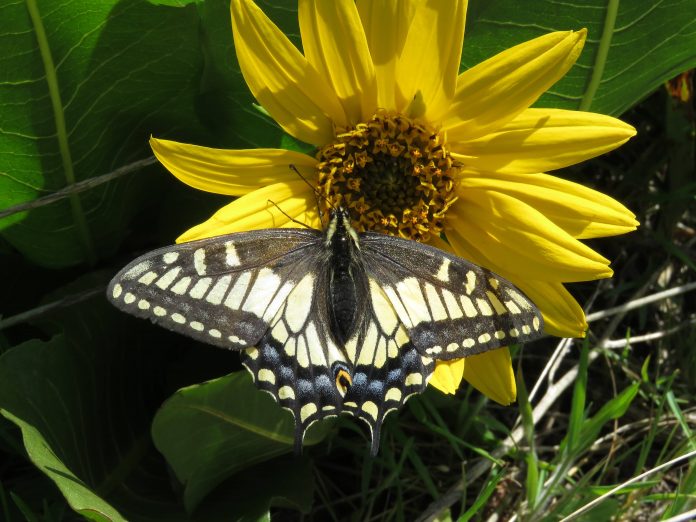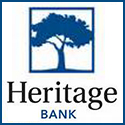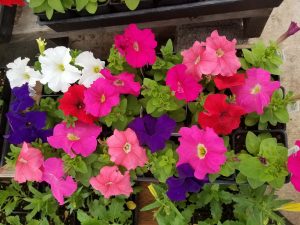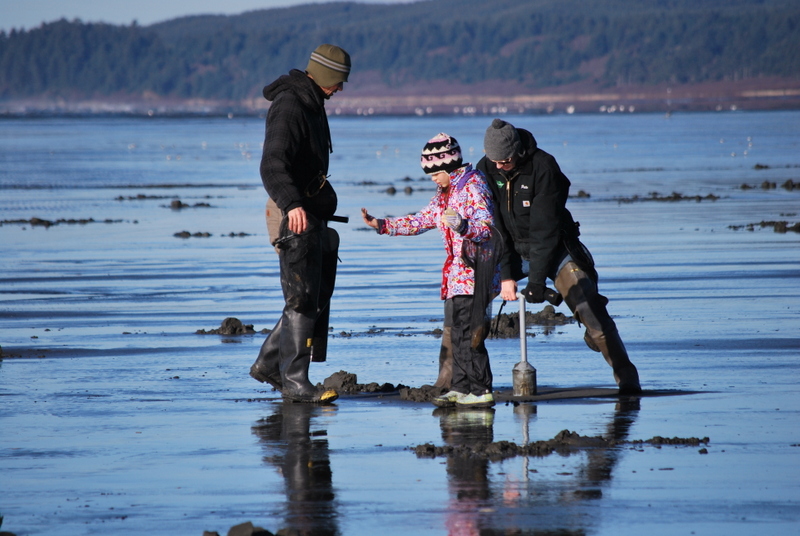
Adding new plants to your yard and garden? How about some native species to attract butterflies? Choosing native plants can help your Thurston County garden become a nationally certified butterfly garden.
 First, take inventory of what native plants are already in your yard. Lilac and rhododendron are very common in our neck of the woods, as well as azalea and lavender. The North American Butterfly Association certification calls for declaring three different species of native nectar plants as well as three different species of native host plants.
First, take inventory of what native plants are already in your yard. Lilac and rhododendron are very common in our neck of the woods, as well as azalea and lavender. The North American Butterfly Association certification calls for declaring three different species of native nectar plants as well as three different species of native host plants.
Butterflies need host plants where they can lay their tiny eggs, and they lay them on the plants that the larvae will eat. Caterpillars need trees like native willows, aspen and poplars. Some prefer certain dogwoods, dill and salal. Worried about the tent caterpillars? They do not turn into butterflies; they are moths. The best way to maintain control over unwanted caterpillars is to hand pick them.
“The most important thing you can do in the care of your butterfly garden and your yard in general is eliminate the use of pesticides, neither organic or synthetic pesticides are conducive to healthy pollinator populations,” says Tracey. L. Kosenski, certified professional horticulturist and avid wildlife gardener. “This should go without saying, but I once had a customer who was frustrated that her butterfly garden wasn’t attracting any butterflies, ‘But the caterpillars are eating all of the leaves off the plants,’ she said. I replied, ‘that’s great, you should see lots of butterflies soon then.’ She teared up as she realized that she had been applying BT, a natural caterpillar killer and therefore killing her future butterflies. A sad story, but I was glad that I was able to gently guide her away from the need to have a garden full of perfect leaves on all her plants.”

Photo credit: Scatter Creek Nurseries
“The more organic you can be, the less pest insects you will have,” advises Guy-Benjamin Rostan from Scatter Creek Nurseries. Organic fertilizers in your garden make plants not taste good to pests because their sugar content is at a healthy level. “The more of ‘the brix,’ or sugars, the plants have, the aphids and mites don’t like them.”
Butterfly Kits
Planting the preferred host plants helps attract caterpillars to the right place. Butterfly kits are another way to start caterpillar larvae in your yard. Species specific larvae kits are available online including south sound species such as the Red Admiral, Painted Lady and Cabbage White. The Washington Butterfly Association provides a handy guide to common South Puget Sound Butterflies with colorful images and information about which plants each species’ larvae needs.
Nectar plants such as rhododendrons, lilacs, thistle or blackberries provide butterfly food. These are all favorites of these flutterers who like bright flowers with reds and purples and prefer a faint fresh odor. The variety of native plants is broad, so consider your yard and the types of butterflies you wish to attract when choosing.

“Asters are a good choice because with pruning and dead-heading they continue to bloom,” suggests Rostan at Scatter Creek. “Milkweed comes in reds and pinks. They like good drainage and full sun. They mostly thrive in eastern Washington but would be a good one to direct-sow here on the western side.”
“Goatsbeard also attracts pollinators including butterflies, but it’s not used as a host,” says Julie O’Donald of the Washington Butterfly Association’s Educational Outreach, “A variety of lupine species could also be considered. Plants in the genus Lupinus are a host for Silvery blues. Attending a local native plant sale will help you find the best species for the region.”
Butterfly Garden Landscaping
In addition to vegetation, butterflies thrive when other needs are met. Got an apple or pear tree that drops fruit? Rotten fruit is also a feast. A little bit of bare earth here and there in the garden provides nutrients, and rocks in sunny places gives them a place to bask in the light. It is vital to plan for supporting the entire life cycle of these pollinators and the extras that attract them after the meal.
“It’s best to try to provide an ecosystem in the larval phase and the butterfly phase,” says Rostan. “Providing the ecosystem and using organic fertilizers is the best approach.”
Butterflies are important pollinators. Among the bees, hummingbirds and other garden visitors, butterflies are part of the cycle that keeps flowering plants producing. Inviting them to your yard and garden supports this need.

“Loss of habitat, degradation of habitat, climate change and widespread use of neonicotinoids and other pesticides all help push our native populations lower,” says David Jennings, president of the Washington Butterfly Association. “But we don’t have good baseline data and multiple years of data collected to say with confidence. Some species adapt well in urban environments, some skippers and the ubiquitous Cabbage White. The Washington Butterfly Association is working with others to set up some citizen science monitoring efforts to develop a baseline for future reference, but it is still a work in progress.”
When your yard contains three or more native nectar sources and three or more native host plants, it is time to get certified! You can apply online for NABA certification and a sign to place in your yard indicating “This yard provides resources that increase the world’s population of butterflies.”
For more information about turning your yard into a butterfly garden, visit the Washington Butterfly Association website.




















































